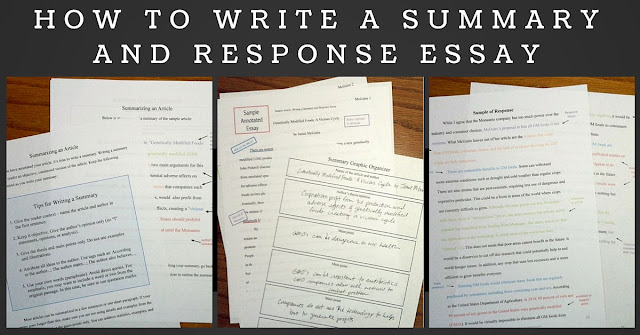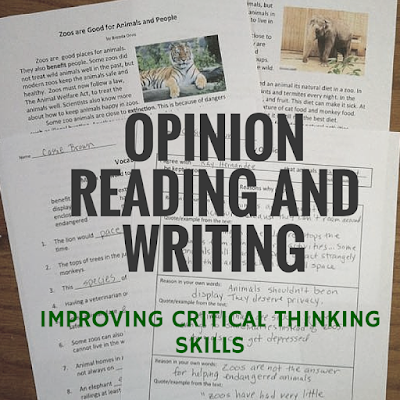Before we begin a research paper in my composition classes, we start with a summary/response essay. I find that if students master the skills of the summary/response essay, they will be well prepared to take on the larger project because it breaks down the process of a research paper into manageable steps.
First, it requires a close reading of a qualified academic source. These types of sources are usually not easy reading, so it will push the students to pay close attention, annotate, make notes, and perhaps cross-check facts, and seek alternative opinions for background. I require an annotation of the chosen article for the first assignment for this essay.
Next comes a summary, which will become the first paragraph of the essay. A good summary follows these guidelines:
1. Gives Context: Name the author and title of the article in the first sentence.
In the article xxx, by xxx, the author states......
2. Contains the main ideas only: The thesis and the main points of the article are all that is necessary in a summary. Leave out examples, illustrations, and details.
3. All ideas are attributed to the author: The reader should always be reminded that these are the ideas and thoughts of the author, not the essay writer.
Jones believes...... or
According to Jones.....
4. Objective: The essay writer should offer no opinions or analysis in the summary. Statements such as
Jones makes a good point when she says... are not objective, because "good point" is subjective.
5. Paraphrase: Use your own words. Direct quotes should be rarely used.
After the summary, the rest of the essay is structured like a traditional essay, with a thesis statement, body paragraphs and a conclusion. The difference is that the whole essay should stay tightly focused as a response to the article. A thesis statement might be structured something like this:
Although Jones makes a strong argument about x, she does not consider x. Or:
I agree with Jones about x, because this is a problem that is often overlooked in the mainstream media.
I require students to quote or paraphrase from the article frequently in their response to make sure they stay focused. It's easy to stray far from the article, especially if the student has strong feelings or a lot of knowledge about the topic. By requiring this kind of focus, it helps students master the skill of integrating sources.
I also require students to use only the one source for this essay to keep it simple.
After the summary/response essay, students can directly transfer the skills to writing a research paper with multiple sources.
I've had great success with this type of essay in my classroom. Not only do students typically score well on this assignment, it gives them the confidence and skills to move forward.
If you would like a prepared summary and response unit, I have one here that includes samples of an annotation, summary, response and complete essay. It also includes step-by-step instructions for the whole process, along with worksheets, graphic organizers, grading rubrics, and more.
























.jpg)











